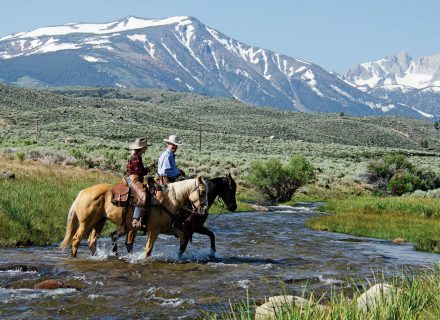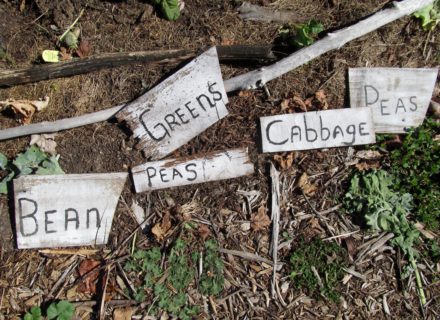Exploring the Spiro Mounds in Eastern Oklahoma proves a haunting trip into Indigenous history.
As the winter solstice sun dipped in blazing fire behind one of the 12 burial, temple, and house mounds at the Spiro Mounds Archaeological Center in eastern Oklahoma, I tried to imagine the scene as it would have been centuries ago.
More than 1,000 years ago, the field where I stood was a thriving prehistoric Native American city and one of the largest and most important Native American centers in the Mississippian region. Up to 10,000 people lived in and around the main city area, and the winter and summer solstices attracted thousands for three days of religious ceremony.
Just a three-and-a-half-hour drive from my hometown of Oklahoma City — where the exhibit Spiro and the Art of the Mississippian World runs through May 14 at the National Cowboy & Western Heritage Museum — the site invited a road trip that would let me explore this important culture for myself.
My friend Emily and I loaded a few things into the car and headed east along Interstate 40, wending through the winter-yellowed hills and rocky plains of Oklahoma. The state is not nearly as flat as outsiders imagine it is, and the closer you get to the Arkansas border, the hillier and rockier the scenery becomes.
Getting to Spiro means ditching the interstate after a few hours for smaller roads that weave through small towns like Brent, Spiro, and Fort Coffee with their quaint main streets and rural, farm-laden surroundings. That Monday, those bustling little towns were sleepy, as if the shortest day of the year was already having an effect.
Pulling up to the entrance of the Spiro Mounds site, we spotted a hand-painted wooden sign touting “Spiro Mounds Archaeological Center” leaning lazily against a chain-link fence.
“Is that the sign?” I asked Emily. “It seems a little rustic, don’t you think?”
We popped out to snap a few shots, but just down the road at the archaeological site’s entrance, an official sign greeted us. A fierce warrior from one of the famous paintings at the site’s museum glared out at us proudly and defiantly as if to remind us that his civilization was here way before us. His bold eyes focused on us, two modern travelers who wouldn’t know how to hunt, farm, or create the art that his society did.
As we sat in the grass and watched the sun creep downward on the shortest day of the year in what seemed the longest year ever, archaeologist and Spiro Mounds Archaeological Center director Dennis Peterson set the scene for us. On this same day, more than 1,000 years ago, this field would have been filled with writhing bodies. In the Temple Plaza at Spiro, 10,000 to 30,000 men gathered to pay homage to not only the solstice, but to the Sun God who would speak through the priests to tell them when to plant crops, how to conduct the coming months’ religious ceremonies, and other important daily tasks.
They smoked sacred tobacco, drank a concoction called “black drink,” and purged en masse before subjecting themselves to three days without food, water, or sleep. They danced, sang, and waited for messages from the Sun God and the high priests, said Peterson, quoting what archaeologists think would have happened during a celebration based on the Caddo Mississippian culture.
“The black drink was an extremely caffeinated drink that had a natural toxin,” Peterson said. “When you drink large amounts of it like they did, you throw up. Can you imagine 30,000 guys throwing up? How wonderful would that smell?”
In the temples, the priests did the same thing, communing with the Sun God for guidance about the coming season.
Sitting there in the glow of a slow sunset, I tried to picture what this area must have looked like when it was the heart of an extensive trade network, a highly developed religious center, and a political seat of power for one of the largest prehistoric Native American cultures to ever exist. On that winter solstice day, Spiro Mounds looked a lot like it probably did when it was discovered by modern settlers, and then later pillaged for its treasures by desperate looters during the Great Depression. Dry, brown grass curled around scraggly water oak and pecan trees on plains punctuated by swells in the land that were created by a civilization long gone.
This powerful trade civilization dissipated and spread out around the 16th century, archaeologists say. But what they left behind was one of the most prolific and important Native American artifact hoards ever discovered in America.
Oklahoma has more than 25,000 prehistoric archaeological sites, but the Spiro Mounds is the only one open to the public. Located along the Arkansas River about 15 miles from Fort Smith, Arkansas, Spiro was one of the most important trade centers of the prehistoric Mississippian culture, thanks in part to that river.
The Spiro Archaeological Center Museum shares the history of Spiro and includes replicas of the copper, bone, and handcrafted art and artifacts found within these mounds. It’s a CliffsNotes version of the two-hour walking tour we had come for.
“The people who lived here from A.D. 800 to 1500 came to control what we call the Mississippian culture. That was a trading political-religious confederation that incorporated over 60 different tribes, over 30 different language groups, directly involving over 6 million people and stretching everywhere from the Rockies to the Virginia coast, from the Gulf Coast of Florida to the Great Lakes,” said Peterson, who has studied the Spiro site as an archaeologist and director since 1979.
“Spiro had trade, communication, and direct control over almost all the United States except for the far Northeast and far Northwest for over 800 years. This was the most powerful group of people in the nation.”
I have lived in Oklahoma for decades, and yet this was my first trip to this Native American historic site. Standing there, I felt the same awe I did when visiting Egypt — a sense of ghosts who lived a sophisticated existence in a time so long ago that age itself loses meaning. I also felt the same horror at the looting and destruction that occurred at Spiro.
As Peterson led us on the winter solstice walk, our group wandered the paths that weaved along the massive reconstructed burial mound and the less-massive swelled humps of house mounds. The burial mound was decimated and destroyed by looters in the 1930s, but researchers rebuilt the mound based on old photographs of the area. It loomed above us, reminding us that it was once filled with bodies and artifacts.
He painted pictures of everyday life, of the women toiling in the fields while the men ran the religious activities of the society.
After the people fled in the 1500s — probably due to a sustained drought, archaeologists say — the site remained unoccupied until 1832, when the Choctaw and Choctaw Freedmen worked the mound site as farmers after the Civil War. “They recognized what the mounds were, and they didn’t disturb them,” Peterson said.
The Great Depression changed that. Local looters calling themselves the Pocola Mining Company dug up the only burial mound and sold off what they found to anyone with money. The Kansas City Star called the Spiro Mounds the “King Tut of the Arkansas Valley” in 1935, because nobody had ever seen anything like what was coming out of Spiro. It was also because of that notoriety that the site was ravaged so destructively.
Today, more than 65 public facilities in the U.S. have Spiro artifacts, including the Smithsonian, the University of Chicago, UCLA, and facilities throughout Texas, Oklahoma, and Arkansas.
The Louvre, the British Museum in London, and the National Museum in Germany all have pieces that came from the Spiro Mounds, as do Russia, Saudi Arabia, Japan, Taiwan, Korea, and Israel.
To stop the destruction, in 1935 Oklahoma became one of the first states in the nation to pass laws forbidding looting, but because of its remote location, the theft continued. Finally, in 1936, the University of Oklahoma — with help from the Oklahoma Historical Society, the University of Tulsa, and private donors — arranged for scientific excavation of what remained of the burial mound to protect what was left.
One day soon, however, those unearthed remains and ancestral items may return to the mounds to be reburied. Under the federal Native American Graves Protection and Repatriation Act (NAGPRA), which celebrated its 30th anniversary in November, any institution that receives federal aid is required to consult with American Indian tribes to help repatriate and return artifacts to the tribal nations from which they originated. For now, however, the Spiro artifacts remain in curatorship at Oklahoma and Texas museums or in private collections as the Caddo and Wichita tribes make final decisions about the return of the artifacts.
The mounds that had produced so much evidence of an important and mysterious ancient civilization were dramatically silhouetted by the quickly setting sun. We were chilled by the bite of the December night. The tour and the shortest day of the year were coming to an end. Driving west by headlights, we passed the modern artifacts of a much different civilization.
I thought about the house mounds, and how the leaders built their homes over the homes of past leaders. The awareness and mindfulness of that concept struck me, as if by building upon past success, the Spiro leaders absorbed that past wisdom. I thought about this city that supported 10,000 people who farmed, fell in love, raised children, died, cried and laughed, and worshipped as one of the most powerful societies to ever live in North America.
I thought about our current pandemic, and how long ago lethal disease wiped out so many of the Mississippian Caddo people’s descendants after Europeans made landfall. I could feel the fear and grief they must have felt when so many of their neighbors and family succumbed to diseases they had never been exposed to before.
We pulled over for a light dinner along the shores of the Arkansas River, bouncing over rough dirt roads to munch on nuts and cheese as we contemplated this great waterway that was the lifeblood of an ancient Indigenous civilization. The river was slow-moving and silent, as mute as the mounds we had just explored.
We hadn’t seen the ghosts of that long-gone civilization, but we’d wandered among them, feeling a deeper connection to a history and culture that remained at least partly buried under the red dirt of eastern Oklahoma.
For more about the Spiro Mounds Archaeological Center, visit okhistory.org/sites/spiromounds.
Photography: Images courtesy Oklahoma Historical Society
From our April 2021 issue


























